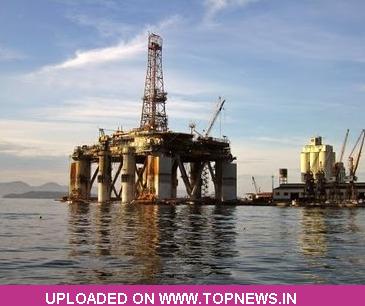Commodity Trading Tips for Crude Oil by KediaCommodity
 Crude Oil settled down -0.72% at 5781 eased on Thursday in light trade as more supply from the Middle East was offset against news of lower output from OPEC. Supply concerns sent oil dipping earlier. As recent talks among the U.S., Russia, China, Britain, Germany, France and Iran ended in agreement on a six-month deal that will limit advancements in Iran's nuclear program in exchange for easing economic sanctions against Tehran starting Jan. 20. In November, Iran pledged to eliminate its stocks of 20% enriched uranium within six months and limit the enrichment of uranium to 5%. While trade sanctions slapped on Iran due to its alleged nuclear ambitions have taken out more than 1 million barrels of oil per day from the global market over the past two years. While the Federal Reserve Bank of Philadelphia reported earlier that its manufacturing index improved to 9.4 in January from 6.4 in December. Analysts had expected a reading of 8.6, and the upbeat reading sparked hopes for more robust activity in the nation's factories will hike demand for energy. Also Indicators of future activity moderated, the report added, though they continued to indicate general optimism concerning economic growth over the next six months, which sent oil trimming earlier losses. Technically market is under long liquidation as market has witnessed drop in open interest by -18.32% to settled at 8702 while prices down -42 rupee, now Crude oil is getting support at 5749 and below same could see a test of 5718 level, And resistance is now likely to be seen at 5819, a move above could see prices testing 5858.
Crude Oil settled down -0.72% at 5781 eased on Thursday in light trade as more supply from the Middle East was offset against news of lower output from OPEC. Supply concerns sent oil dipping earlier. As recent talks among the U.S., Russia, China, Britain, Germany, France and Iran ended in agreement on a six-month deal that will limit advancements in Iran's nuclear program in exchange for easing economic sanctions against Tehran starting Jan. 20. In November, Iran pledged to eliminate its stocks of 20% enriched uranium within six months and limit the enrichment of uranium to 5%. While trade sanctions slapped on Iran due to its alleged nuclear ambitions have taken out more than 1 million barrels of oil per day from the global market over the past two years. While the Federal Reserve Bank of Philadelphia reported earlier that its manufacturing index improved to 9.4 in January from 6.4 in December. Analysts had expected a reading of 8.6, and the upbeat reading sparked hopes for more robust activity in the nation's factories will hike demand for energy. Also Indicators of future activity moderated, the report added, though they continued to indicate general optimism concerning economic growth over the next six months, which sent oil trimming earlier losses. Technically market is under long liquidation as market has witnessed drop in open interest by -18.32% to settled at 8702 while prices down -42 rupee, now Crude oil is getting support at 5749 and below same could see a test of 5718 level, And resistance is now likely to be seen at 5819, a move above could see prices testing 5858.
Trading Ideas:
Crudeoil trading range for the day is 5718-5858.
Crude oil dropped as expectations of more supply from the Middle East and North Africa outweighed news of a large drop in U.S. crude stockpiles.
Huge volumes of crude from Iran and Libya have been blocked by political and civil disputes.
Worries that the extra supply will tip the oil market into surplus are outweighing signs of accelerating global economic growth and increasing fuel demand.